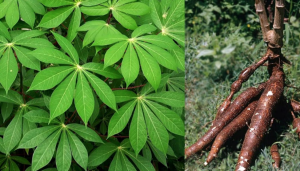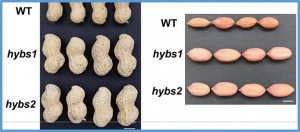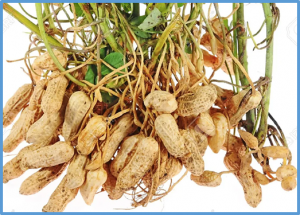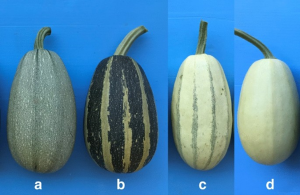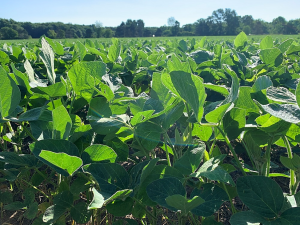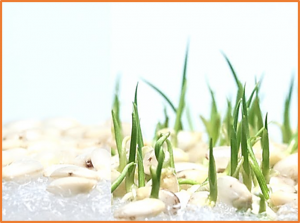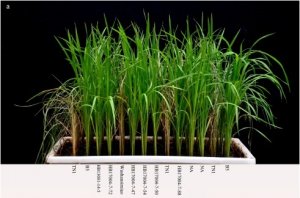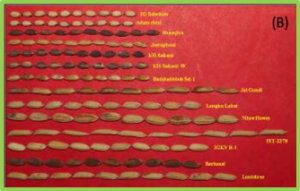Pattern-triggered immunity (PTI) and effector-triggered immunity (ETI) in plants enable them to respond to pathogens by activating the production of defence metabolites that orchestrate immune responses1-4. How the production of defence metabolites is promoted by immune receptors and coordinated with broad-spectrum resistance remains elusive. Here we identify the deubiquitinase PICI1 as an immunity hub for PTI and ETI in rice (Oryza sativa).
Cassava (Manihot esculenta Crantz) is the sixth most important food crop and consumed by 800 million people worldwide. In Africa, cassava is the second most important food crop after maize and Africa is the worlds' largest producer. Though cassava is not one of the main commodity crops in South Africa, it is becoming a popular crop among farming communities in frost-free areas, due to its climate-resilient nature.
Seed size is the major yield component and a key target trait that is selected during peanut breeding. However, the mechanisms that regulate peanut seed size are unknown. Two peanut mutants with bigger seed size were isolated in this study by 60Co treatment of a common peanut landrace, Huayu 22, and were designated as the "big seed" mutant lines (hybs). The length and weight of the seed in hybs were about 118% and 170% of those in wild-type (WT), respectively. We adopted a multi-omics approach to identify the genomic locus underlying the hybs mutants.
Peanut (Arachis hypogaea L.), an allotetraploid legume of the Fabaceae family, is able to thrive in tropical and subtropical regions and is considered as a promising oil seed crop worldwide. Increasing the content of oleic acid has become one of the major goals in peanut breeding because of health benefits such as reduced blood cholesterol level, antioxidant properties and industrial benefits such as longer shelf life. Genomic sequencing of peanut has provided evidence of homeologous AhFAD2A and AhFAD2B genes encoding Fatty Acid Desaturase2 (FAD2), which are responsible for catalyzing the conversion of monounsaturated oleic acid into polyunsaturated linoleic acid.
Stem color is an important agronomic trait in zucchini (Cucurbita pepo) for robust seeding and high yield. However, the gene controlling the stem color has not been characterized. In this study, we identified a single locus accounting for the dark green stem color of C. pepo (CpDsc-1). Genetic analysis of this trait in segregated populations derived from two parental lines (line 296 with dark green stems and line 274 with light green stems)
As the main part of the plant canopy structure, leaf/leaflet size and shape affect the plant architecture and yield. To explore the leaflet trait QTL system, a population composed of 199 recombinant inbred lines derived from Changling (annual wild, narrow leaflet) and Yiqianli (landrace, broad leaflet) with their parents was tested for leaflet length (LL), width (LW) and length to width (LLW). The population was genotyped with specific-locus amplified fragment sequencing (SLAF-seq) and applied for linkage mapping of the leaflet traits.
Seed germination is a complex biological process that is affected by many factors. Although a number of germination-related genes have been reported, the molecular mechanism of germination regulation has not yet been fully elucidated. Here, we reported that the rice OsCEN2 gene can negatively regulate seed germination. The germination speed of OsCEN2-RNAi seeds was significantly faster while that of OsCEN2-overexpression (OE) seeds was slower than that of the wild type (WT).
The brown planthopper (BPH, Nilaparvata lugens Stål) is still considered a major threat to rice farmers. Exploring novel resistance genes that relate to the BPH population in the targeted rice-growing area might be a suitable solution. We identified and mapped the gene locus using 175 lines of F2:3 populations derived from Balamawee × PD601. Genomic analysis was then used to identify the candidate gene governing the resistance toward BPH.
Herbivore-induced defense responses are often specific, whereas plants could induce distinct defense responses corresponding to infestation by different herbivorous insects. Brown plant hopper (BPH) Nilaparvata lugens, a phloem-feeding insect, and rice leaf folder (LF) Cnaphalocrocis medinalis, a chewing insect, are both specialist herbivores on rice. To characterize the distinct resistance primed by prior damage to these two specialist herbivores
Quantitative trait loci (QTL) for rice grain weight identified using bi-parental populations in various environments were found inconsistent and have a modest role in marker assisted breeding and map-based cloning programs. Thus, the identification of a consistent consensus QTL region across populations is critical to deploy in marker aided breeding programs. Using the QTL meta-analysis technique, we collated rice grain weight QTL information from numerous studies done across populations and in diverse environments to find constitutive QTL for grain weight.


 Curently online :
Curently online :
 Total visitors :
Total visitors :

